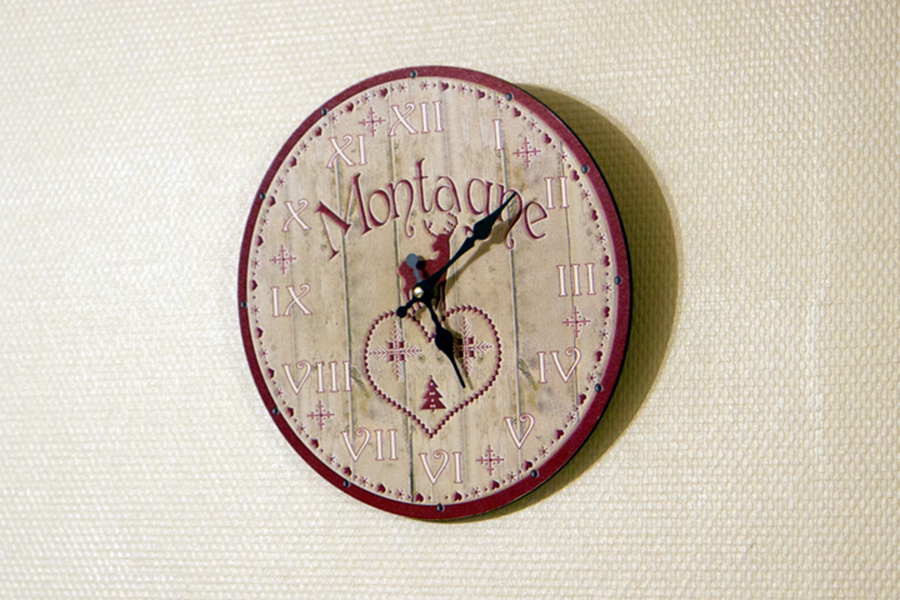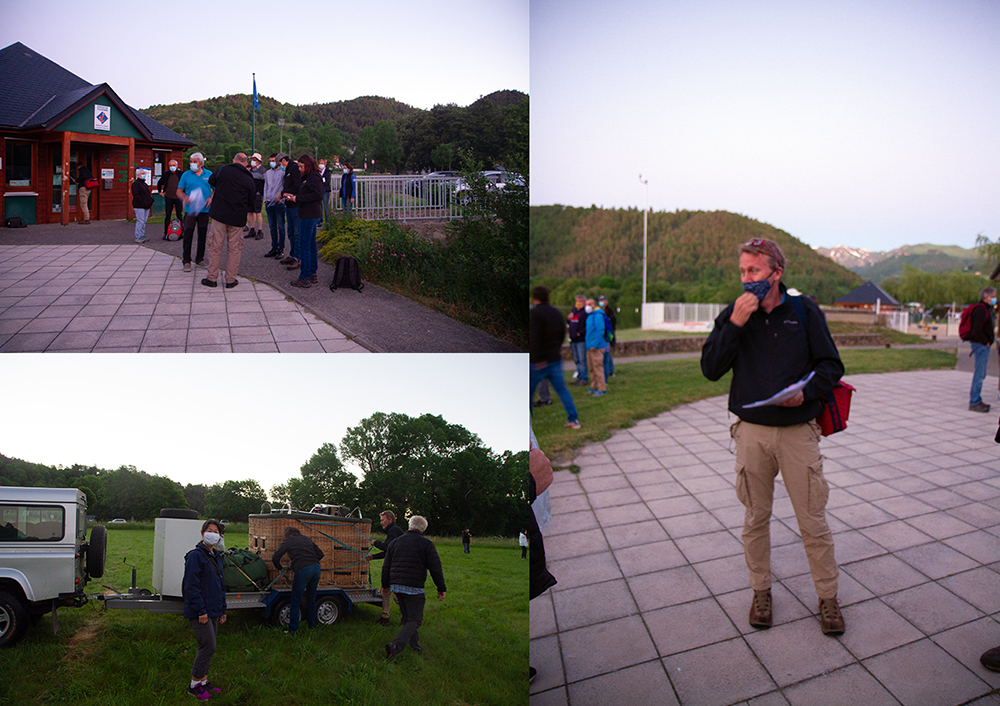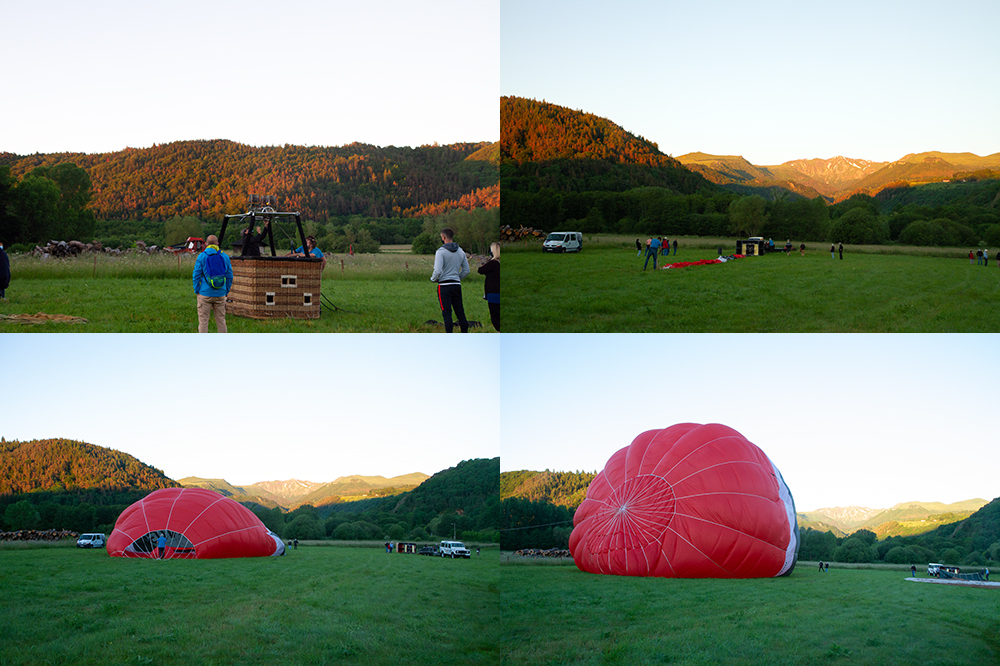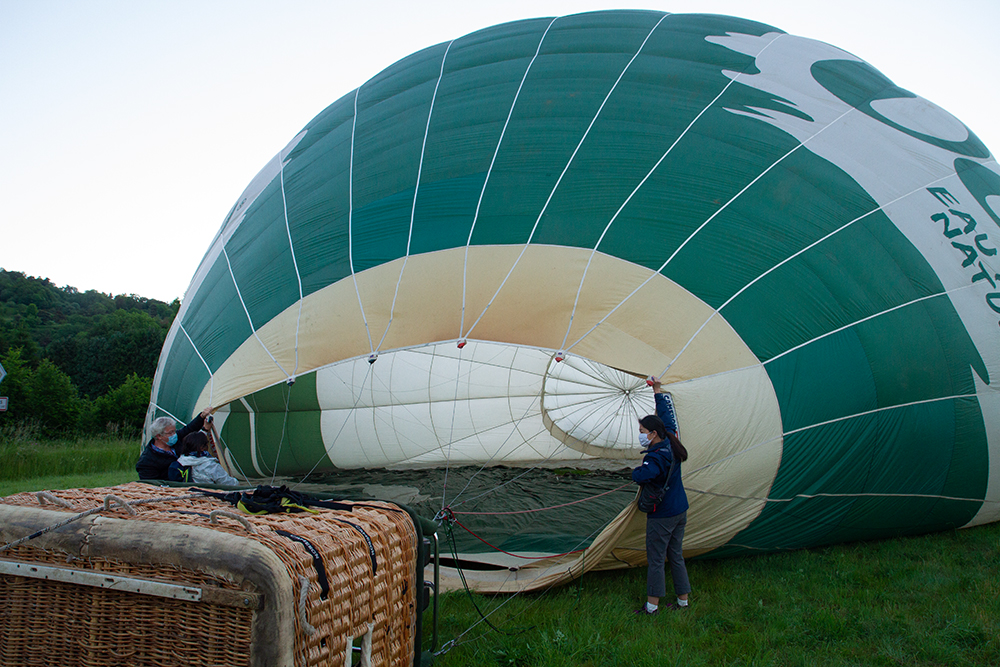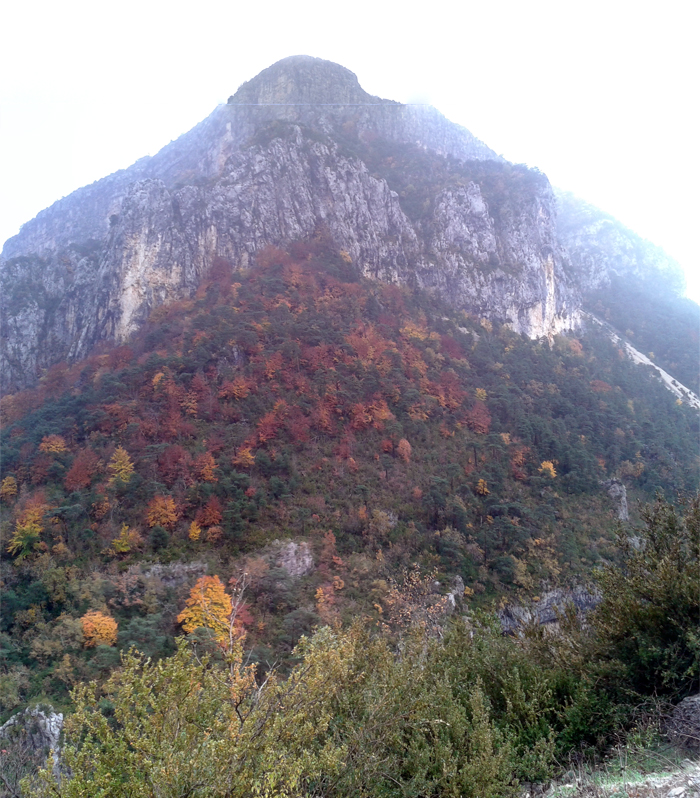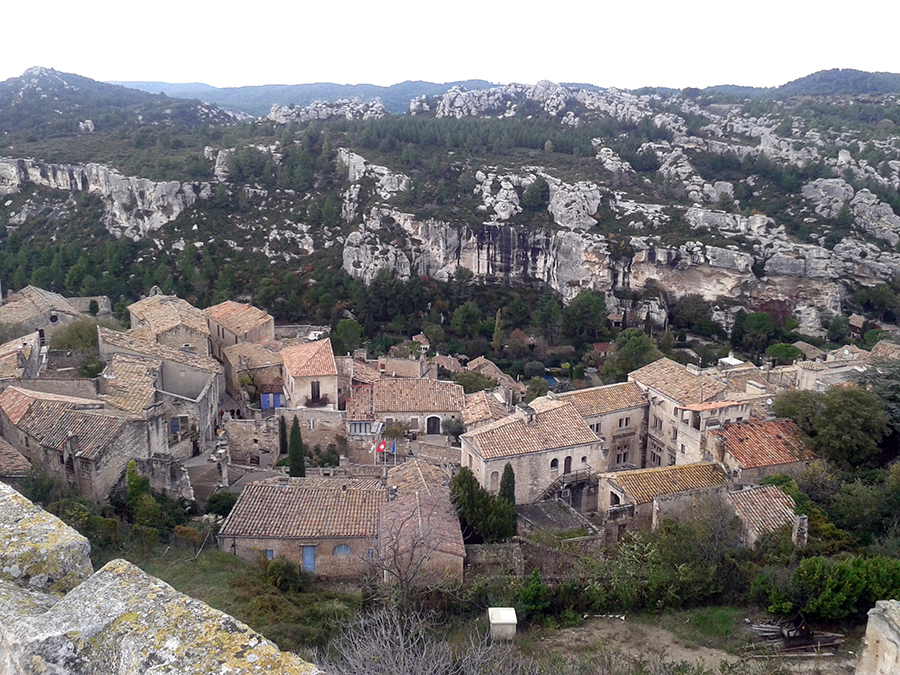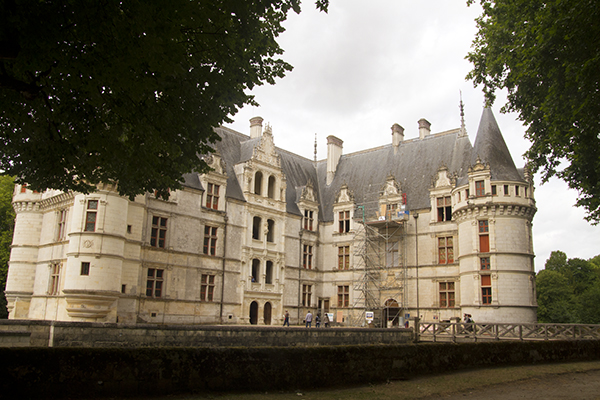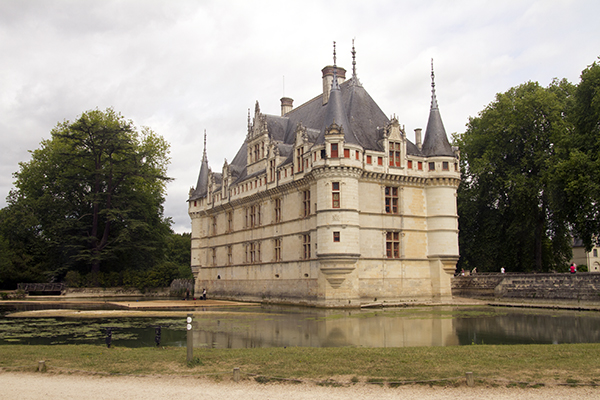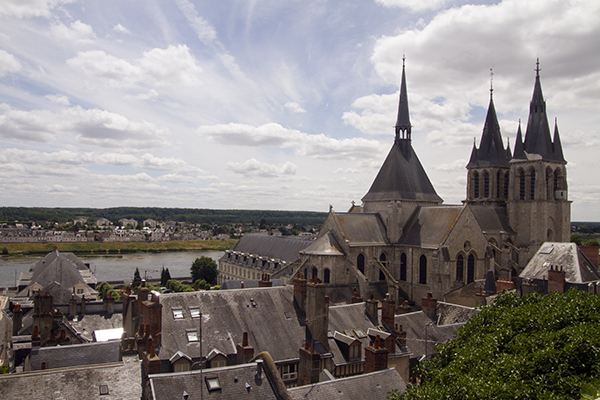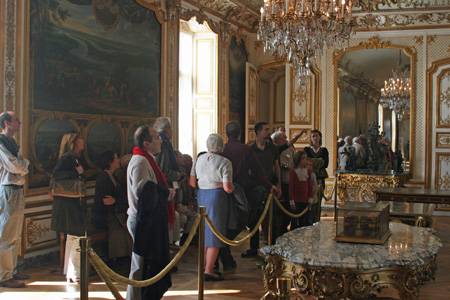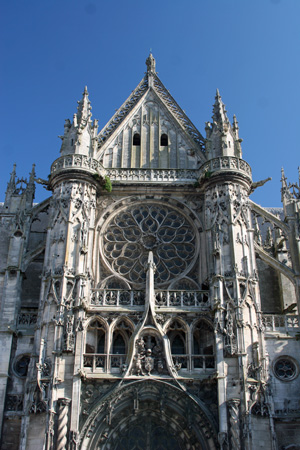It appears that I have a lot to catch up on to let you know what I have been doing up to the end of 2008.
I will do this in two installments – one that I will call ‘before Myanmar or AM (Ante Myanmar)’ and another that will be called ‘after Myanmar or PM (Post Myanmar)’ but please do not hold me to that as I have no ideas how much effort either of those will take.
In late July, I made another visit to Sungei Bulow, Singapore’s Wetland Reserve on the North West corner of the island. I went there very early as usual and immediately ran into a large flock of egrets
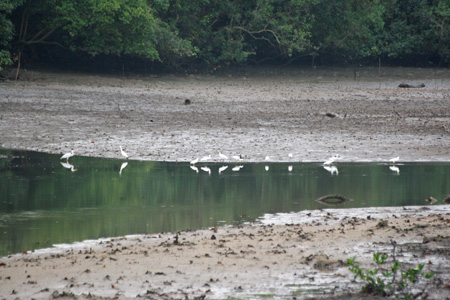
I also got a very good look at ‘mud skippers’ taking advantage of the low tide – even though they are officially classified as ‘fish’, they can breathe air and can spend a lot of time above the surface of the water.
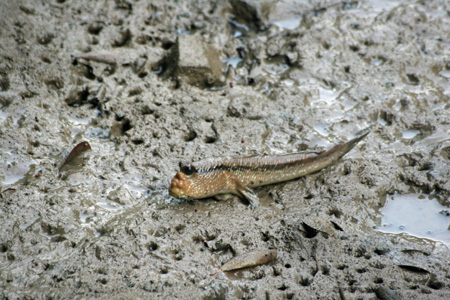
There are crabs also taking advantage of the low tide – some are even climbing on trees, or on low lying tree limbs …
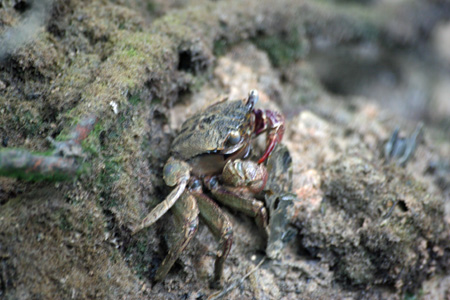
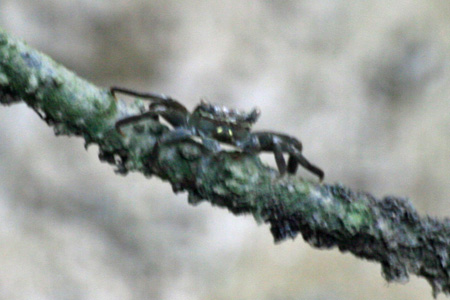
This beautiful Kingfisher kept me interested for a while. I had missed it initially, but saw movement out of the corner of my eye and noticed that he was looking at me as much as I was looking at him.
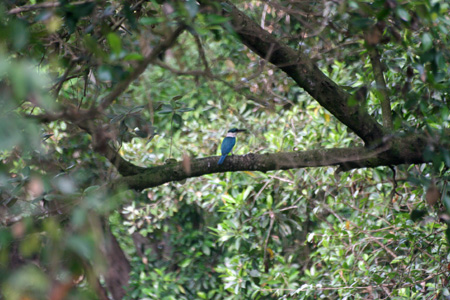

Amazing what small changes to the setting of the camera can do – and only if you look at both pictures side by side…
As always, there are Herons

And monitor lizards

A very pleasant 2-hour walk and I am done.
In early August, Singapore celebrated its National Day, just as we were finishing the “Round Singapore Cycling Challenge” which I did cover earlier. In my apartment, I have a privileged location and for the past 4 to 5 weeks I had seen the practices of the helicopter fly-by every Saturday around 6:30 PM. The scenario was always the same: two “Chinook” helicopters each with a giant Singapore Flag would fly towards my apartment with three “Apache”. Somewhere over Telok Blanagh, one of the Chinooks would veer away and a single flag, with three Apaches would continue towards the Marina Area. National Day Parade is very serious, and therefore it would not be acceptable not to have the proper fly-by, even if one helicopter should have a last minute failure.
To my surprise, on this Saturday, there were three Chinooks circling about, each with a flag. Safety in numbers!
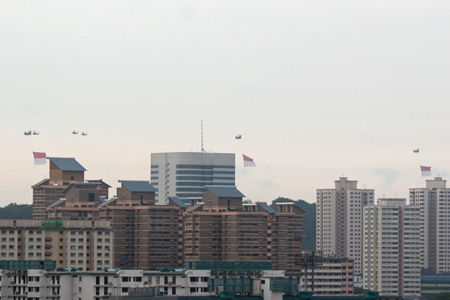
One of them peeled off early and therefore only two turned towards my apartment. Does anybody hear the “Ride of the Valkyries” in the background?
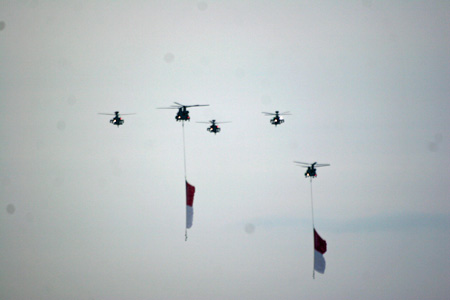
They come very close to my apartment before they veer off towards the Marina.
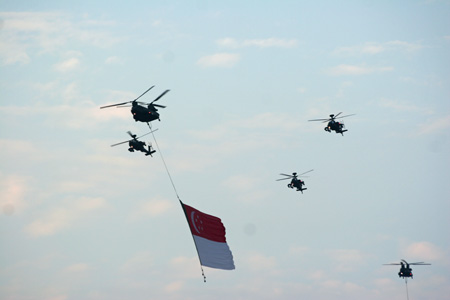
I followed them as they made their way through the buildings towards the Marina Bay.
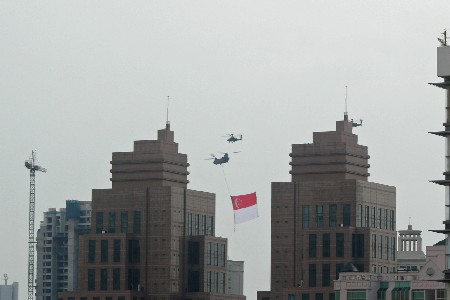
I could not see the actual fly-by, but it was followed by some aerobatics by the local air force team which I did see, but is very hard to photograph especially with my telephoto!
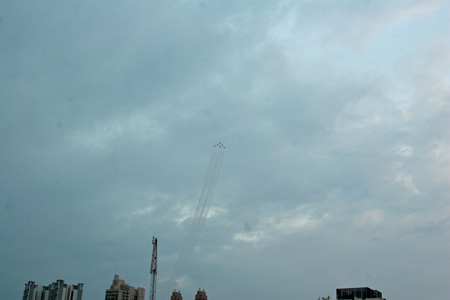
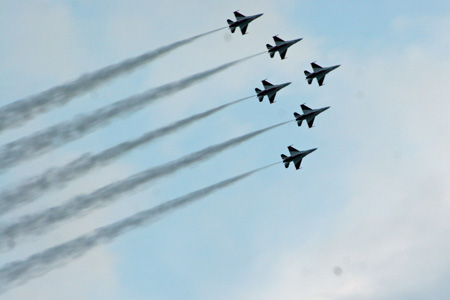
One of them actually made a heart, and I had seen them practicing the arrow through the middle, but I could not see it from my vantage point.
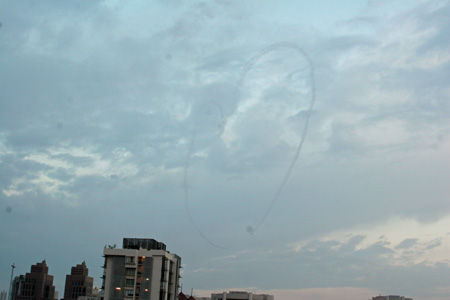
All this was happening as the sun was setting in the West…
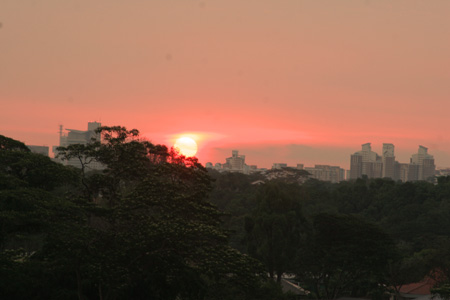
In September, I competed in my second ½ Ironman, as a team again – let me reassure you. I already reported on those events
At the end of September I was in Belgium and attended the “O” family reunion – I already told you about that in minute details.
After that, I spent four days in Normandy, visiting the Mont St Michel and the D-Day landing beaches. I have been interested in WWII since a very small lad – events leading up to and during the war were regular dinner conversation with my parents and grand-parents and I learned a lot about what happened behind the scene and to the civilian population. When I moved to Italy, I learned another side of the same story and witnessed for the first time the devastation of war when we visited Monte Cassini, and the huge military cemeteries that surround the re-constructed monastery. With all of this, and the many books on the subject I had read, I never once visited probably the most important site from the war – the beginning of the second front that eventually led to the defeat of Germany.
I was very impressed with Pegasus Bridge (a new version but very similar to the old one), taken by the allied paratroopers in the very first hours of D-Day
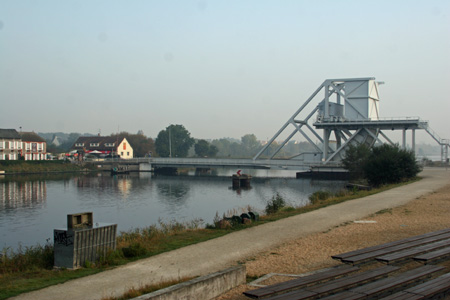
I visited the German bunker in Ouistreham which has been turned into a museum of the Atlantic Wall. It is 5 stories tall – the views of the sea from the roof-top observatory are commanding.

But most of all, I was amazed at how much remained of the Mulberry Harbour in Arromanches! You hear so much about the destructing force of the sea, and the legendary storms in the Atlantic, but to have so much of the pre-fabricated harbour still intact 60 years later was more than I expected.
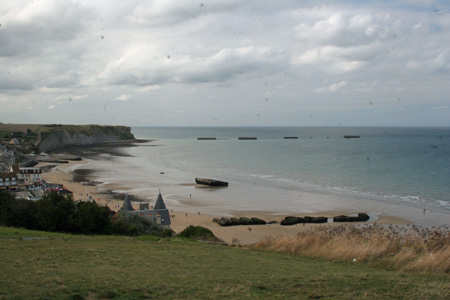
Not far from Arromanches is the Battery of Longues-sur-mer, the only one left intact with the original guns still in place.
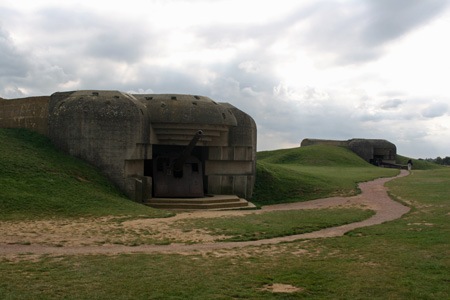
There is an excellent view form here to Arromanches and therefore it was imperative to disable these guns before the Mulberry Harbour could be built.
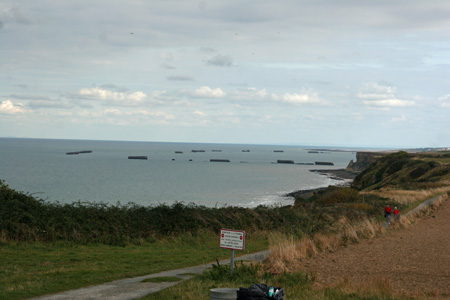
I also had to stop at Ste. Mere Eglise, the first town in France taken by US paratroops in the night of June 5-6. It was immortalised in the film “The Longest Day”, especially the scene where one paratroopers was caught on the steeple of the church – he survived his ordeal with only a gun shot to his foot by feigning to be already dead when discovered by German soldiers.
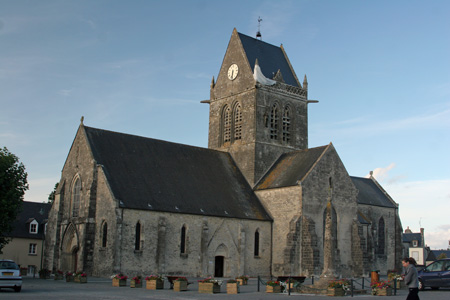
Pointe du Hoc is another such famous place. The point itself is not very spectacular.

What is left of the defensive fortifications gives a better idea of what happened here
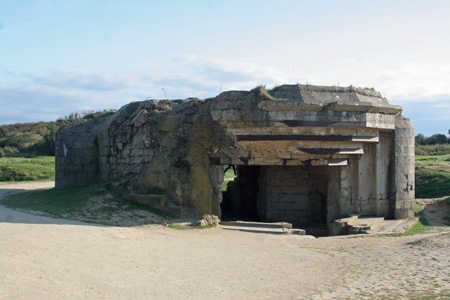
But most impressive is the ground all around the bunkers – this was left intact after the battle and it is clear that not everything was a direct hit! What is must have been like to sit in the bunker while all this was raining on top and all around you?
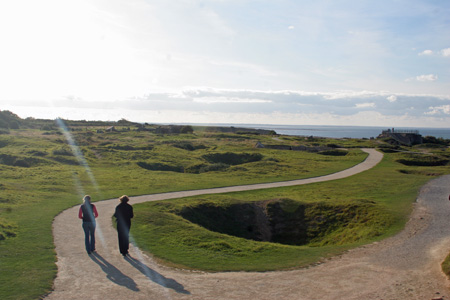
I visited a British cemetery in Douvres La Delivrande (‘only’ 1123 graves in this one)
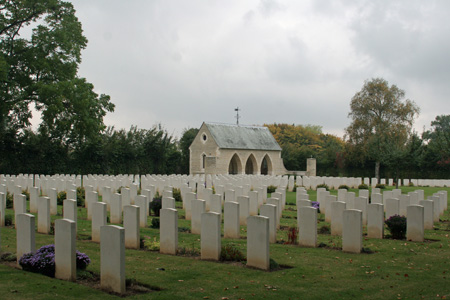
and the main American cemetery in Colleville-sur-Mer (with over 9000 graves)

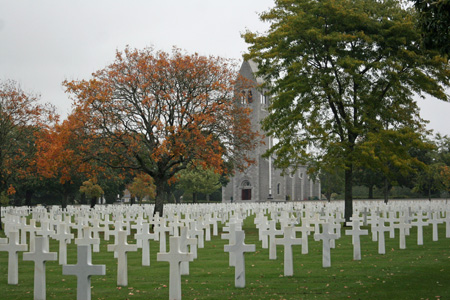
both sobering, awe inspiring and peaceful – the exact opposite of the circumstances that led to the death of so many young men.
I will have to come back when I have more time to explore the small towns as each has its own museum, all with different themes. One could easily spend more than a week in this area.
(909 Page Views)
